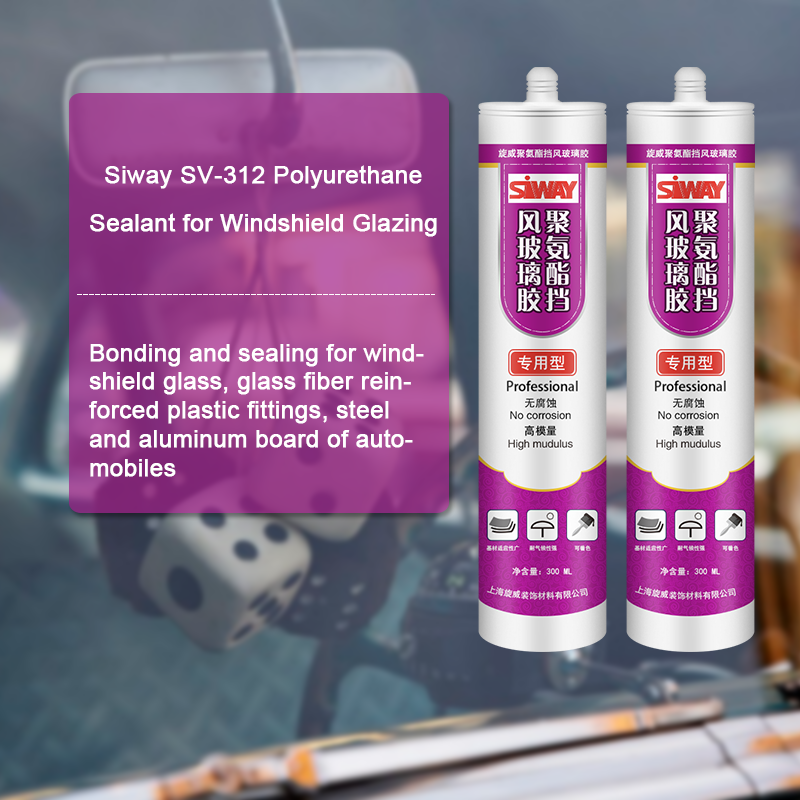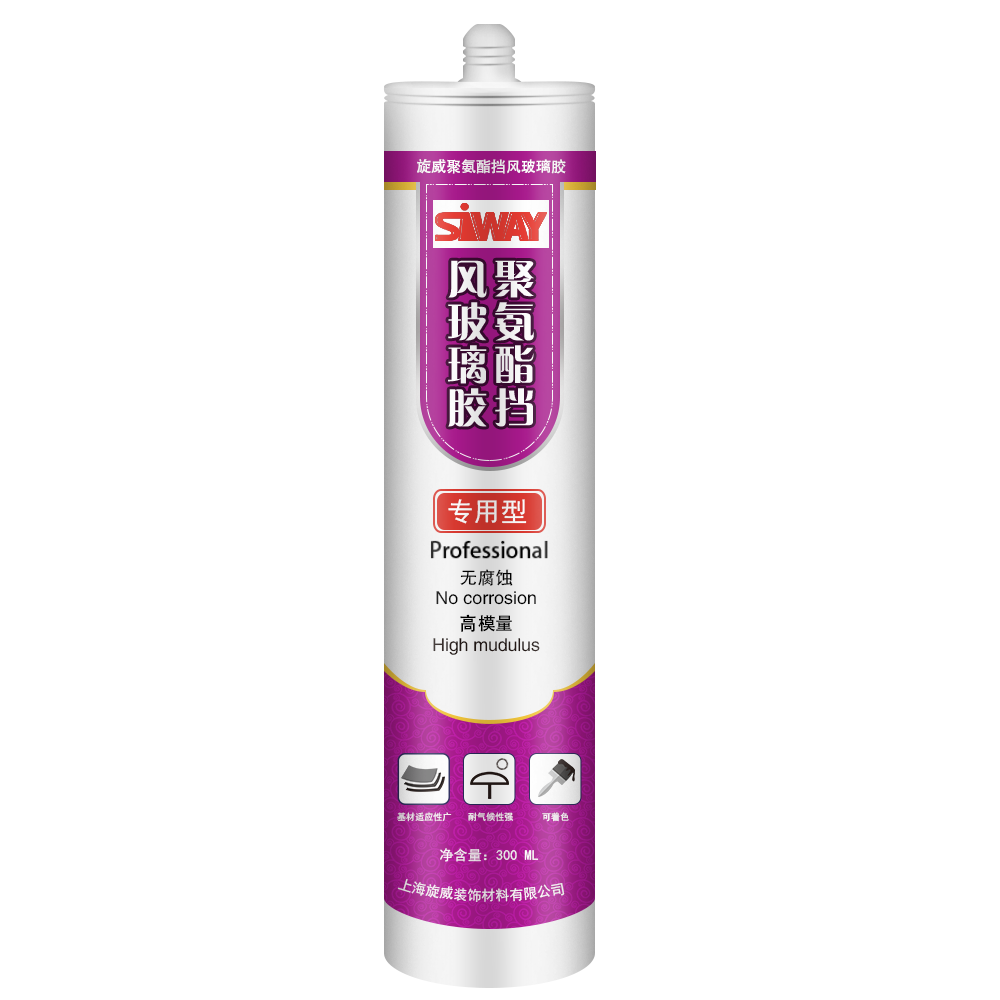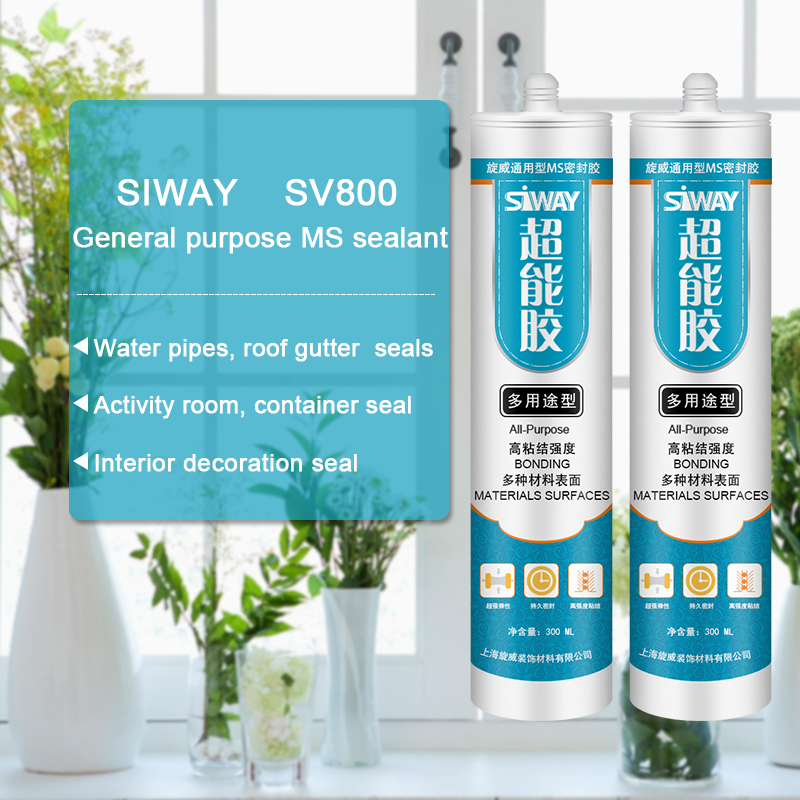Personlized Products SV-312 Polyurethane Sealant for Windshield Glazing Wholesale to Iran
Short Description:
Description SV-312 is an isocyanate-free, high modulus,non conductive, thixotropic, single component modified polyurethane adhesive, which polymerizes rapidly under the effect of atmospheric moisture. It has been specially designed for bonding of fixed glass in automotive repair. It allows a drive away time of 6 hours in vehicles with or without airbag. *Providing the ambient temperature is at least 23°C and relative humidity 50 %. At lower temperatures and humidities drive away time will be...
Our products are widely recognized and trusted by users and can meet continuously developing economic and social needs for Personlized Products SV-312 Polyurethane Sealant for Windshield Glazing Wholesale to Iran, Welcome to set up long-term relationship with us. Best Price For Good Quality in China.
Description
SV-312 is an isocyanate-free, high modulus,non conductive, thixotropic, single component modified polyurethane adhesive, which polymerizes rapidly under the effect of atmospheric moisture. It has been specially designed for bonding of fixed glass in automotive repair.
It allows a drive away time of 6 hours in vehicles with or without airbag.
*Providing the ambient temperature is at least 23°C and relative humidity 50 %.
At lower temperatures and humidities drive away time will be longer.
Where to use
Bonding and sealing for windshield glass, glass fiber reinforced plastic fittings, steel and aluminum board of automobiles.
Key Features
a. Fast curing under room temperature, no sagging, solvent free
b. High bonding strength,
c. Good chemical and water resistance
d. No conductive
e. Excellent noise, vibration and impaction resistance
f. Automotive OEM quality
Technical data sheet
| Test standard | Test project | Unit | value |
| GB13477 | Flow, sagging or vertical flow | mm | 0 |
| GB13477 | surface drying time(25℃,50%R.H.) | min | 30 |
| Curing speed | mm/24h | 3 | |
| GB/T 531.1-2008 | Durometer Hardness | Shore A | 45 |
| GB/T 2793 | Non-volatile components | % | ≥96 |
| GB/T 528 | The tensile strength | Mpa | 2.5Mpa |
| GB/T 528 | Elongation at break | % | ≥400% |
| GB/T 528 | Tear strength | N/mm | ≥5.0 |
Color
White, black, grey
Package
300ml plastic cartridges and 600ml in sausage
Shelf life
9 months
Note
If you want the TDS or MSDS or other details, please contact with our sales person.
If you cannot drain your aquarium to repair a leak from the inside, and you need to work from the outside, you have to beat hydraulic pressure.
The way you can do it, is by patching from bottom (where your leak is) to top.
1) Use a 2″ tape (scotch / masking / duct / whatever). See the patch in my other video: https://www.youtube.com/watch?v=3HRAjfYTesQ
2) patch this tape with a coat or 2 of a plastic bag.
3) put a stripe of silicone (any kind – since it’s external). Now your “bandaid” is ready.
4) put this patch on your Leakage in a way that the dripping is chased up. You cannot completely seal since hydraulic pressure is stronger than silicone. But the silicone is strong enough to push the water flow 1″-2″ up. Just make sure you chase the leak Upwards – not downwards, and not side ways.
5) every 20 minutes or so, you can take of your patch (the plastic bag helps here), and put a new patch, 2″ higher up (repeat steps 1-4) with a small overlap between the previous and the new silicone, so that you continue chasing upwards. If you miss (leak goes in another direction, repeat on this section, till you get it up).
6) as you go upwards, at some point the hydraulic pressure will be low enough that your leakage stops completely. even if you are not lucky, once you reach the top water level, the water pressure is 0, and your leakage will be over.
My leak was at the bottom front left side, and I had to work up slowly against 15″ of water (about 40cm on a 50cm deep aquarium).
When I started this, I did’t know how it was going to turn out. In hindsight I would of course drain 1/3 of the water or 1/5 of the water – anything that is doable without taking out the fish (my initial constraint) or impacting the bio-equilibrium. Doing this would reduce pressure and essentially make it easier (it would take less stages of 2″ patching).
As a conclusion, I can say that in any case drain your aquarium as much as you can – it will help.
Then, if your leak is situated above the water level – work from the inside, using aquarium safe silicone, and if your leak is below that, use the method in this video.
As this was my first external repair it doesn’t look nice, and possibly I could have tried with less silicone, or maybe I could have trimmed it afterwards. However right now I cannot afford the headace of causing a new leak just for the sake of aesthetics.
5200 saved my bacon! 3M(TM) Marine Adhesive Sealant 5200 used to patch and repair a zodiac in Alaskan fishing grounds. Boat, sweat and tears for 50 years.






